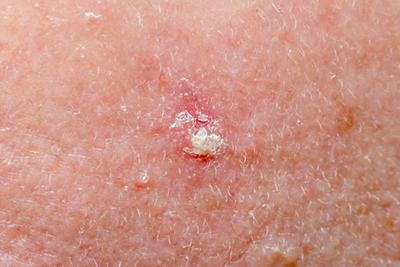
Understanding Actinic Keratosis: Causes, Symptoms, and Risk Factors
Actinic keratosis (AK) is a common skin condition caused by prolonged exposure to the sun's harmful ultraviolet (UV) rays. These rough, scaly patches typically appear on sun-exposed areas like the face, scalp, neck, and hands. While they may seem harmless at first, AKs are a sign that your skin has been damaged by the sun over time and can potentially develop into a more dangerous form of skin cancer if left untreated.
Imagine spending years enjoying outdoor activities, only to notice small, persistent patches on your skin that don't seem to heal. These areas might feel rough to the touch, slightly raised, or even become sore. If you've spent much time in the sun—gardening, golfing, or enjoying walks—your skin may be at risk.
Visiting Dr. Clifford W. Lober at the first sign of actinic keratosis can significantly transform your skin's health. Dr. Lober is highly skilled in identifying and treating Actinic Keratosis in Kissimmee and Ocoee, FL, offering treatments that effectively remove these precancerous spots before they progress. Early intervention helps prevent potential complications. If you notice unusual skin changes or persistent rough patches, consult Dr. Lober to ensure your skin stays healthy and safe.
Understanding Actinic Keratosis: Causes, Symptoms, and Risk Factors
Actinic Keratosis (AK) is a skin condition caused by prolonged exposure to ultraviolet (UV) rays, typically from the sun or tanning beds. When your skin becomes exposed to UV rays over time, this can damage the DNA in your skin cells, leading to rough, scaly patches known as actinic keratoses. These patches often appear on areas frequently exposed to the sun, like the face, ears, scalp, neck, hands, and arms. For example, someone who spends hours gardening or working outdoors might develop AK on the back of their hands.
Symptoms of Actinic Keratosis usually start with a small, rough spot that feels like sandpaper. Over time, these spots may grow larger, become more pronounced, or change color. While they seem harmless, they can sometimes itch, burn, or even bleed if irritated. Imagine noticing a persistent, rough patch on your forehead that feels different from the surrounding skin—this could be an early sign of Actinic Keratosis in Kissimmee and Ocoee, FL.
Certain factors increase your risk of developing Actinic Keratosis. Fair-skinned individuals, particularly those with blonde or red hair and light-colored eyes, are susceptible to this condition. A history of sunburns, especially blistering ones, also heightens the risk. For example, if you’ve spent summers at the beach without proper sun protection, you may likely develop these precancerous lesions.
Consult Dr. Clifford W. Lober for Optimal Skin Health
Visit Dr. Lober for skin cancer screenings, persistent rashes, suspicious moles, acne issues, or unusual skin changes. Please explore our website to learn about the conditions we treat and the services provided. If you have questions or concerns regarding Actinic Keratosis in Kissimmee and Ocoee, FL, and want to schedule an appointment with Dr. Clifford W. Lober to discuss diagnosis, prevention, and treatment, call our Kissimmee office at (407) 846-7166 or our Ocoee office at (407) 656-9700.